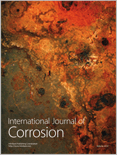
International Journal of Corrosion
Scope & Guideline
Transforming Materials Science Through Corrosion Research
Introduction
Aims and Scopes
- Corrosion Mechanisms and Behavior:
Research articles explore the fundamental mechanisms of corrosion in different materials, including metals and alloys, under various environmental conditions. - Corrosion Inhibition Techniques:
The journal publishes studies on innovative corrosion inhibitors, including synthetic and natural compounds, and their effectiveness in various application scenarios. - Material Protection Strategies:
Focus on the development and evaluation of protective coatings and treatments to enhance the corrosion resistance of materials in industrial applications. - Environmental Impact and Sustainability:
Emphasis on environmentally friendly corrosion management solutions, including the use of bio-based and eco-friendly inhibitors. - Advanced Testing and Characterization Methods:
Research utilizing advanced techniques for corrosion testing, including electrochemical methods, radiographic techniques, and in situ monitoring to assess corrosion rates and behaviors.
Trending and Emerging
- Biologically-Inspired Corrosion Inhibitors:
There is a notable increase in research focusing on bio-based and environmentally friendly corrosion inhibitors, reflecting a trend towards sustainability and eco-friendliness in materials science. - Nanotechnology in Corrosion Protection:
The application of nanomaterials and nanotechnology for enhancing corrosion resistance is gaining traction, with studies exploring the use of nanocoatings and nanocomposites. - Corrosion in Harsh Environments:
An emerging focus on corrosion behavior in extreme conditions, such as acidic environments or polluted waters, suggests a growing interest in protecting materials used in challenging industrial applications. - Advanced Characterization Techniques:
A trend towards the use of advanced characterization and monitoring techniques, such as electrochemical impedance spectroscopy and in situ measurements, is becoming more prevalent in corrosion studies. - Corrosion in Infrastructure and Construction:
Increasing attention is being given to corrosion issues in infrastructure, particularly regarding the protection and longevity of materials used in construction and civil engineering.
Declining or Waning
- Traditional Corrosion Testing Methods:
As new technologies and methodologies emerge, traditional corrosion testing methods have become less prominent, leading to a decrease in publications focused solely on these approaches. - Corrosion in Non-Industrial Settings:
Research related to corrosion in non-industrial or less technical environments seems to be declining, potentially due to a shift towards industrial applications and high-tech materials. - Corrosion Studies in Passive Materials:
There appears to be a decrease in studies focusing on passive materials that naturally resist corrosion, as the journal shifts towards more active research on corrosion-inhibiting strategies and coatings.
Similar Journals

International Journal of Electrochemical Science
Pioneering discoveries in the realm of electrochemical sciences.International Journal of Electrochemical Science is a peer-reviewed journal dedicated to disseminating cutting-edge research in the field of electrochemistry. Published by Elsevier in Serbia, this journal serves as a vital platform for scientists and researchers to explore innovative electrochemical techniques, processes, and applications. With an ISSN of 1452-3981, it has been a respected source of scholarly articles since its inception in 2006 and continues to bridge the gap between theoretical advancements and practical implementations up until 2024. Notably, it holds a Q4 quartile ranking in the field of electrochemistry and ranks 41 out of 60 in the Scopus database, situating it within the 32nd percentile among its peers. The journal champions open academic discourse, contributing significantly to the advancement of knowledge in electrochemical sciences, making it an essential resource for researchers, professionals, and students alike who are striving towards new discoveries and innovations.
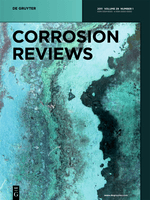
CORROSION REVIEWS
Advancing the Science of Corrosion ManagementCORROSION REVIEWS, published by WALTER DE GRUYTER GMBH in Germany, is a pivotal journal dedicated to advancing the understanding and management of corrosion phenomena across various fields including Chemical Engineering, Chemistry, and Materials Science. With an ISSN of 0334-6005 and an E-ISSN of 2191-0316, this esteemed journal has demonstrated an enduring commitment to scholarly excellence since its inception in 1979, encompassing comprehensive interdisciplinary research outputs and reviews. Ranked in the Q2 category across several disciplines for 2023, and positioned favorably in Scopus rankings—#94 in Chemical Engineering and #145 in Chemistry—it serves as an essential resource for researchers and professionals seeking to enhance their knowledge and application of corrosion science. While the journal does not currently offer open access, its rigorous peer-review process ensures high-quality, credible research publications that contribute significantly to the academic community's efforts in corrosion prevention and policy. Researchers, students, and industry professionals alike will find CORROSION REVIEWS an indispensable tool for staying at the forefront of this critical area of study.
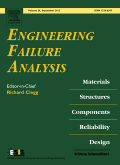
Engineering Failure Analysis
Navigating the Complexities of Engineering FailuresEngineering Failure Analysis is a prestigious peer-reviewed journal published by PERGAMON-ELSEVIER SCIENCE LTD, dedicated to advancing the field of engineering through comprehensive investigations into the causes and consequences of failures in various engineering domains. Established in 1994, the journal has become a cornerstone of knowledge in sectors such as Aerospace, Automotive, and Materials Science, earning its place within the Q1 quartile across multiple relevant categories in 2023. With a broad scope that encompasses topics related to safety, risk, reliability, and quality, it serves as a vital resource for researchers, professionals, and students keen on understanding how to mitigate failures and improve engineering practices. Although this journal does not currently offer Open Access, its impact is underscored by its high Scopus ranking, where it sits comfortably in the 36th position out of 307 in General Engineering. By bridging theoretical insights and practical applications, Engineering Failure Analysis plays a pivotal role in shaping the future of engineering standards and safety practices.

Coatings, published by MDPI, is a premier open-access journal dedicated to the science and technology of coatings, surfaces, and films. Since its inception in 2011, the journal has rapidly established its significance in the fields of Materials Chemistry and Surfaces and Interfaces, currently holding a respectable Q2 ranking in various relevant categories as of 2023. Based in Basel, Switzerland, Coatings aims to disseminate high-quality, peer-reviewed research, fostering innovative advancements in coating technologies and their applications. The journal's impact is further reflected in its position within Scopus rankings, where it has achieved notable percentiles across multiple disciplines. As an advocate for open access, Coatings ensures worldwide availability of research findings, making it an essential resource for researchers, industry professionals, and students alike, striving to advance knowledge in surface engineering and material science.

Metals
Unlocking the potential of metals through innovative research.Metals is an esteemed open access journal published by MDPI, focusing on the diverse field of metallurgical science and its applications. Since its inception in 2011, the journal has provided a platform for the dissemination of high-quality research regarding the behavior, processing, and properties of metals and alloys. With an E-ISSN of 2075-4701, it has quickly established itself within the scientific community, achieving a remarkable Q1 ranking in the realm of Metals and Alloys and a Q2 rank in general Materials Science as of 2023. The journal is situated in Switzerland and is committed to the principles of open access, ensuring that findings are accessible to a broad audience without subscription barriers. With its notable impact factor and a strong emphasis on innovative research, Metals serves as an essential resource for researchers, professionals, and students seeking to advance their knowledge and understanding in the ever-evolving landscape of metallurgical studies.
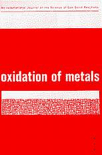
OXIDATION OF METALS
Leading the Charge in Inorganic and Materials ChemistryOXIDATION OF METALS, published by SPRINGER/PLENUM PUBLISHERS, stands as a pivotal journal in the fields of Inorganic Chemistry, Materials Chemistry, and Metals and Alloys. Established in 1969, it has consistently contributed to advancing knowledge and research on the oxidation processes in metals, essential for various industrial applications and theoretical frameworks. With an impact factor that reflects its respected position—ranked Q2 in key scientific categories—this journal facilitates cutting-edge discourse among researchers and practitioners alike. The journal is committed to open access, ensuring that groundbreaking research on metals’ behavior and resistance to oxidation is available to a broader audience, enhancing collaboration and innovation. Spanning over five decades, OXIDATION OF METALS continues to be a crucial resource for scholars and professionals aiming to stay at the forefront of materials science and engineering.
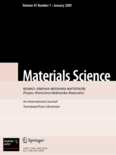
MATERIALS SCIENCE
Advancing the Frontiers of Materials Science.MATERIALS SCIENCE, a prominent journal published by SPRINGER, serves as a vital resource for researchers, professionals, and students in the fields of materials science, mechanical engineering, and condensed matter physics. With its ISSN 1068-820X and E-ISSN 1573-885X, this journal has been dedicated to sharing innovative research since its inception in 1993, and it continues to publish groundbreaking findings through 2024. Although it operates as a traditional subscription-based journal, its ranking in the Q3 quartile across multiple scientific categories, including Condensed Matter Physics, Materials Science, Mechanical Engineering, and Mechanics of Materials, signifies its relevance and impact in the academic community. Notably, its Scopus classifications reveal a competitive standing among its peers, ranking within the 25th to 33rd percentiles across various engineering and physics disciplines. The journal remains a key platform for disseminating valuable insights, fostering collaboration, and advancing the understanding of materials science.

JOURNAL OF ADHESION SCIENCE AND TECHNOLOGY
Elevating Knowledge in the Dynamic World of Adhesion Science.Journal of Adhesion Science and Technology is a distinguished publication within the fields of Chemistry, Materials Science, and Engineering, published by the reputable Taylor & Francis Ltd. Since its inception in 1987, the journal has been pivotal in advancing the understanding of adhesion mechanisms, technologies, and applications, boasting a conversion period extending to 2024. With a commendable impact factor and rankings placed in the Q2 category across various relevant domains, including Mechanics of Materials and Materials Chemistry, it offers a robust platform for scholars and practitioners alike. While currently not an open-access journal, it provides multiple access options, ensuring that vital research in adhesion science remains accessible to those dedicated to innovation and practical improvements in material interactions. This journal not only promotes empirical research but also encourages interdisciplinary collaboration, making it essential reading for researchers, industry professionals, and students eager to contribute to this dynamic field.

International Journal of Corrosion and Scale Inhibition
Empowering Researchers to Combat CorrosionInternational Journal of Corrosion and Scale Inhibition (ISSN: 2305-6894, E-ISSN: 2305-6894), published by VSEROSSIISKAYA ASSOTSIATSIYA KORROZIONISTOV, is a distinguished open-access journal dedicated to advancing knowledge in the critical fields of corrosion science and material degradation processes. Established in 2012, this journal serves as a vital platform for researchers, professionals, and students aiming to explore innovative solutions to corrosion-related challenges across diverse industries. Located in the Russian Federation, it boasts commendable rankings, placing it in the Q2 category for both Materials Chemistry and Metals and Alloys, signifying its significant impact within the scientific community. With a robust Scopus ranking—a commendable 40th out of 176 in Materials Science for Metals and Alloys and 120th out of 317 in Materials Chemistry—the journal highlights its pivotal role in disseminating research that shapes the future of material durability and sustainability. By fostering open access to scholarly work, the journal ensures that critical findings are accessible to a broad audience, thereby promoting knowledge sharing and collaboration in the quest to mitigate corrosion and enhance material performance.

CORROSION SCIENCE
Transforming corrosion insights into practical applications.CORROSION SCIENCE, published by Pergamon-Elsevier Science Ltd, is a leading journal in the field of corrosion research, recognized for its significant contribution to advancing knowledge in Chemical Engineering, Chemistry, and Materials Science.
With a remarkable impact factor placing it in the Q1 category as of 2023, this journal serves as a crucial platform for researchers, engineers, and practitioners dedicated to the study of corrosion processes, prevention methods, and material degradation. Since its inception in 1961, CORROSION SCIENCE has consistently provided high-quality peer-reviewed articles that explore innovative solutions to corrosion-related challenges, fostering advancements not only in academic research but also in practical applications across various industries. The journal is based in the United Kingdom and is accessible through various academic databases, making it a vital resource for students and professionals seeking to enhance their understanding of corrosion mechanisms and mitigation strategies.